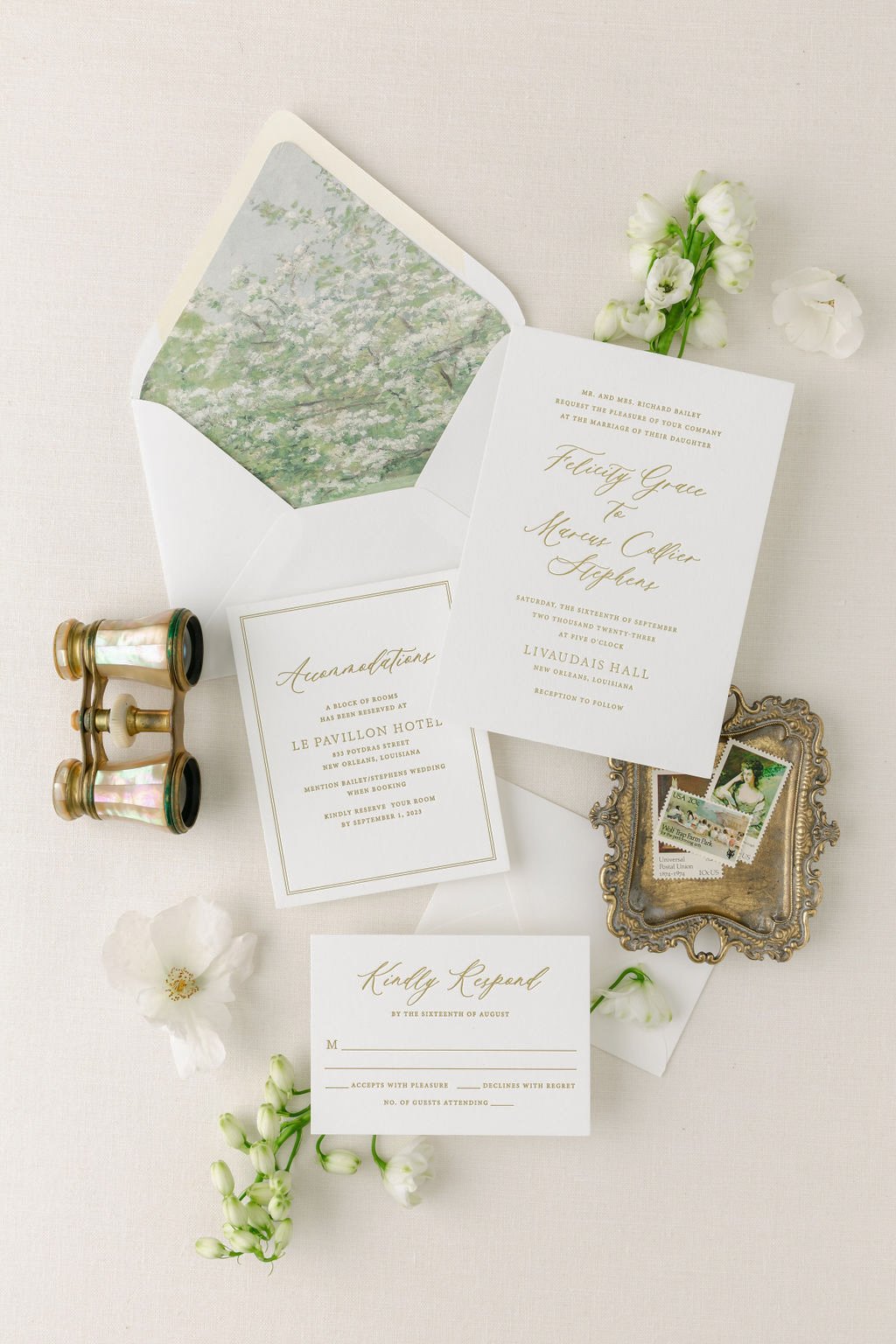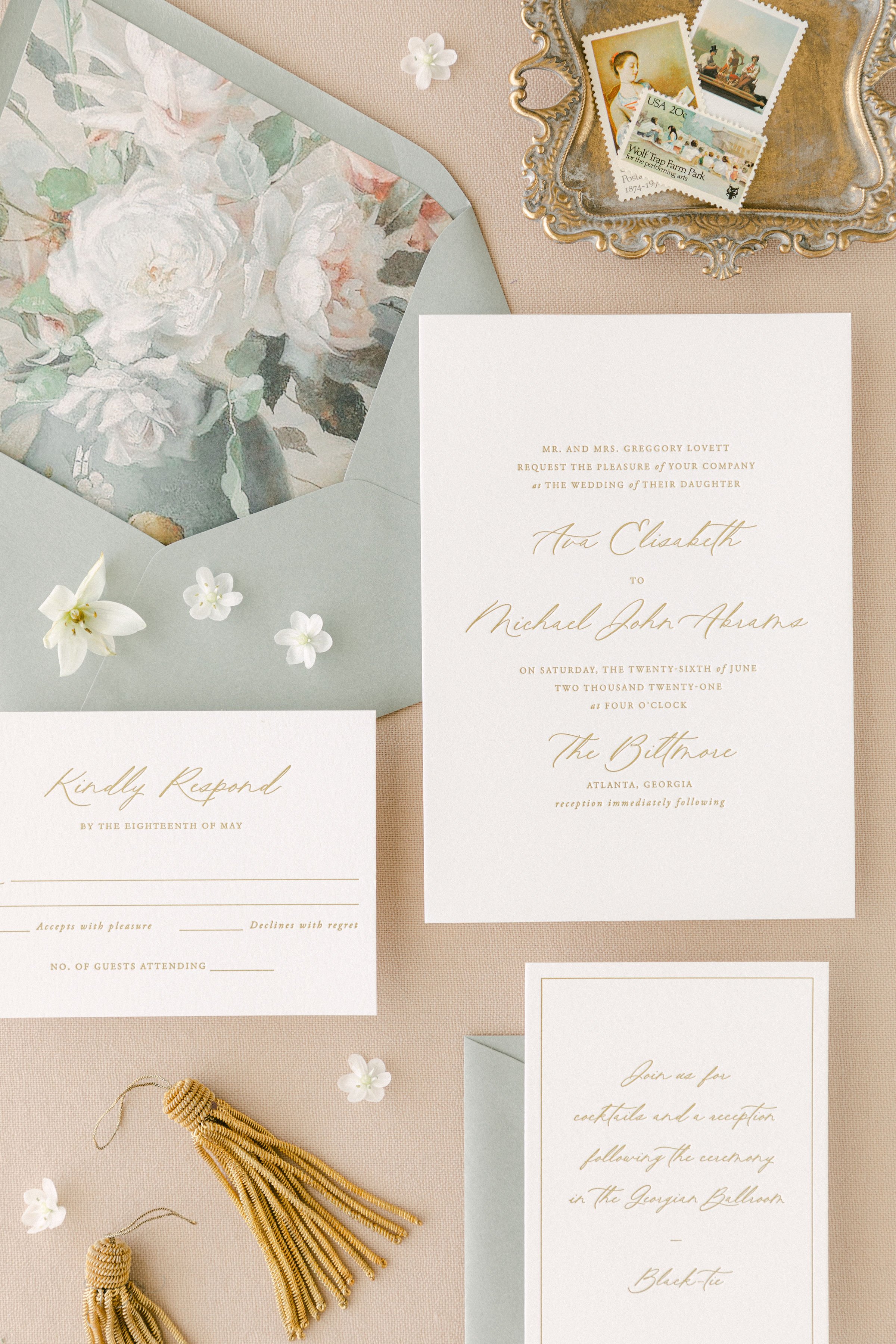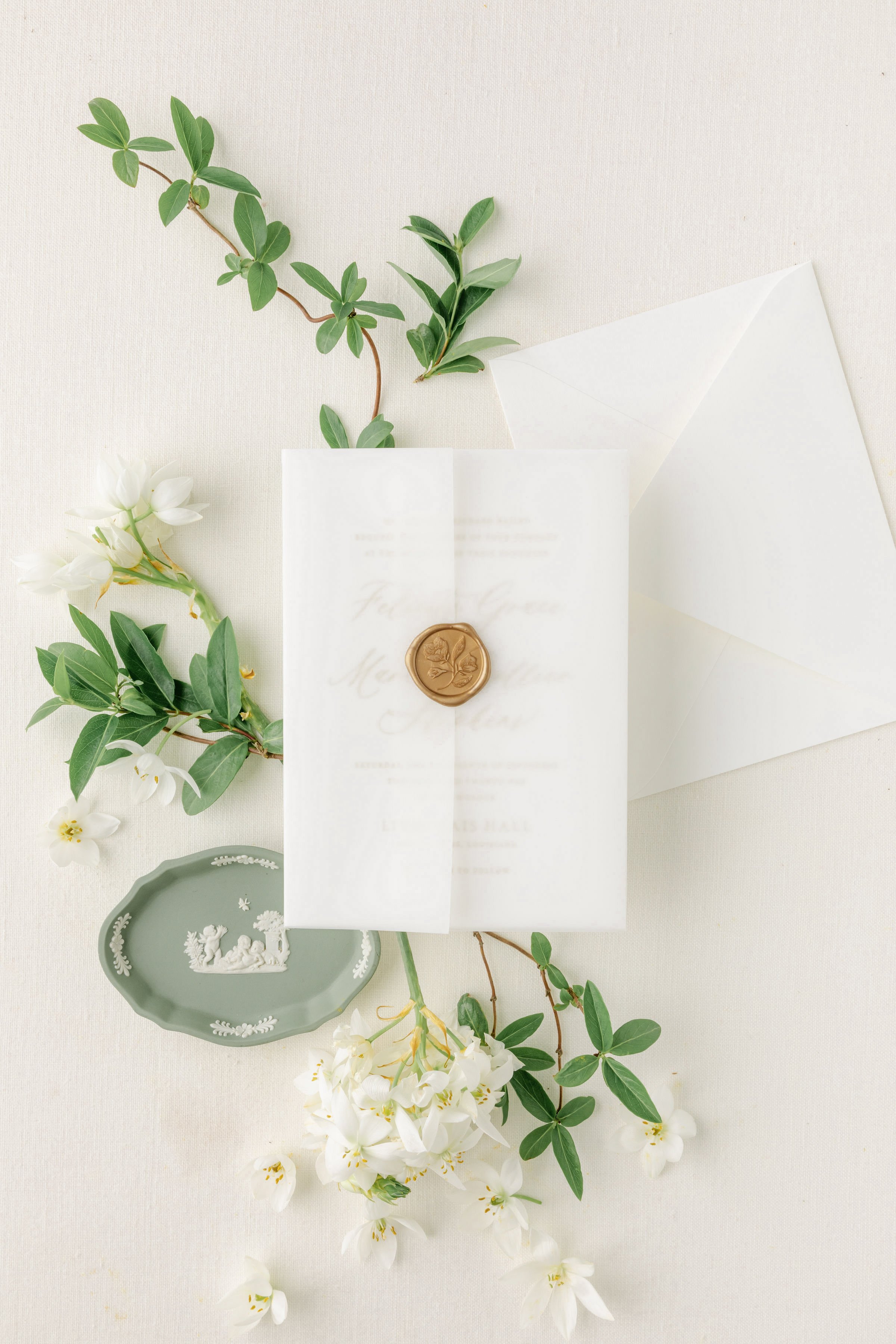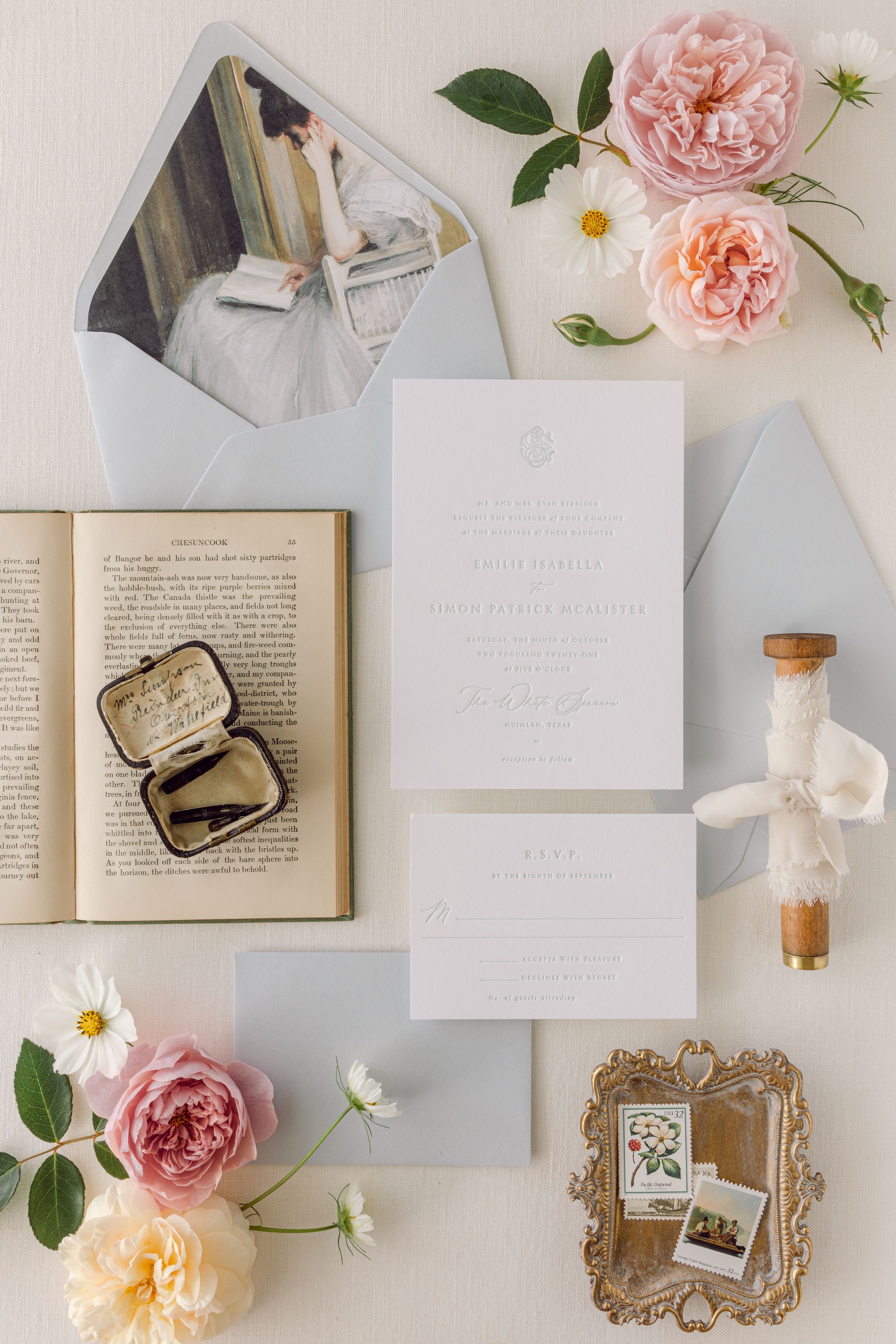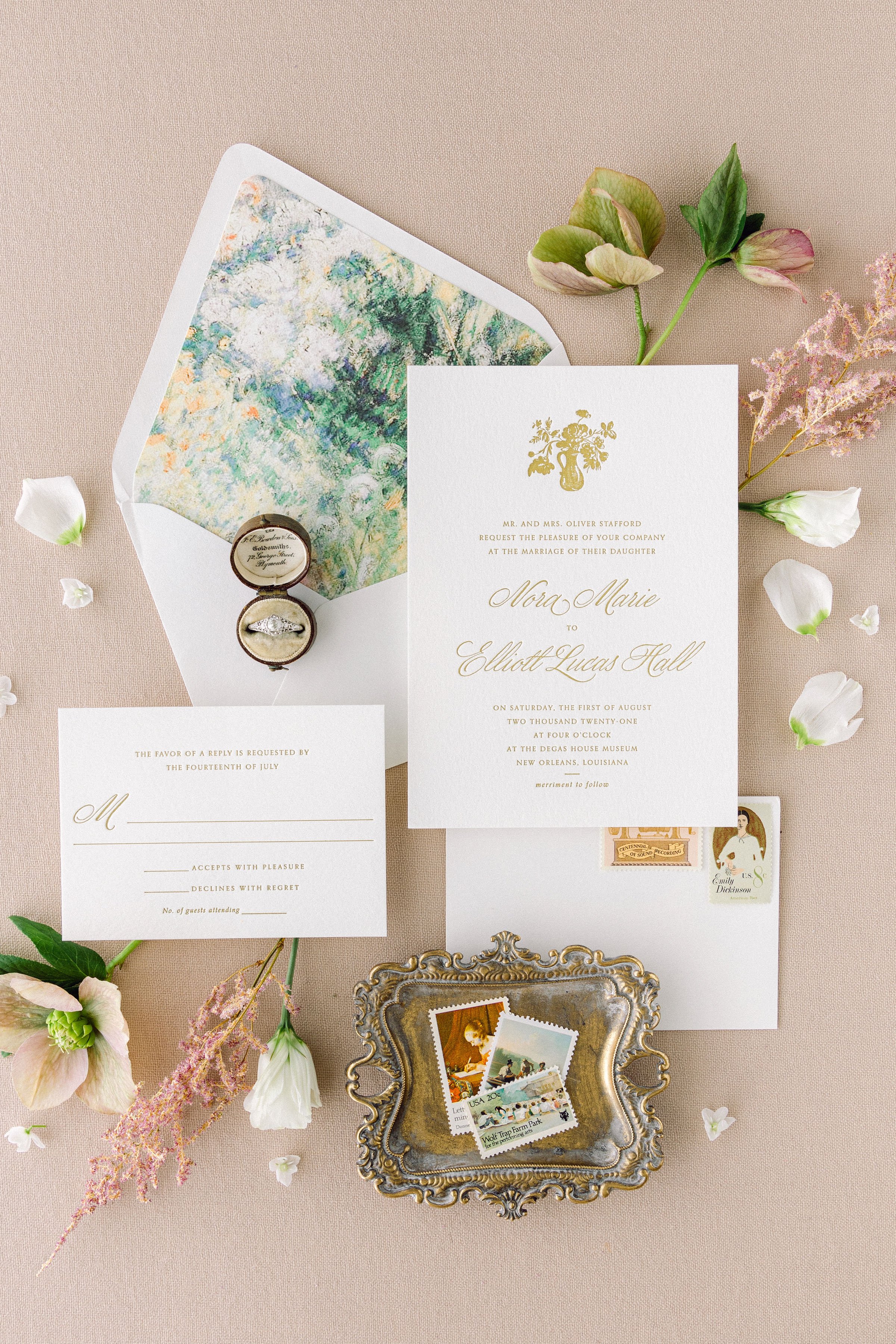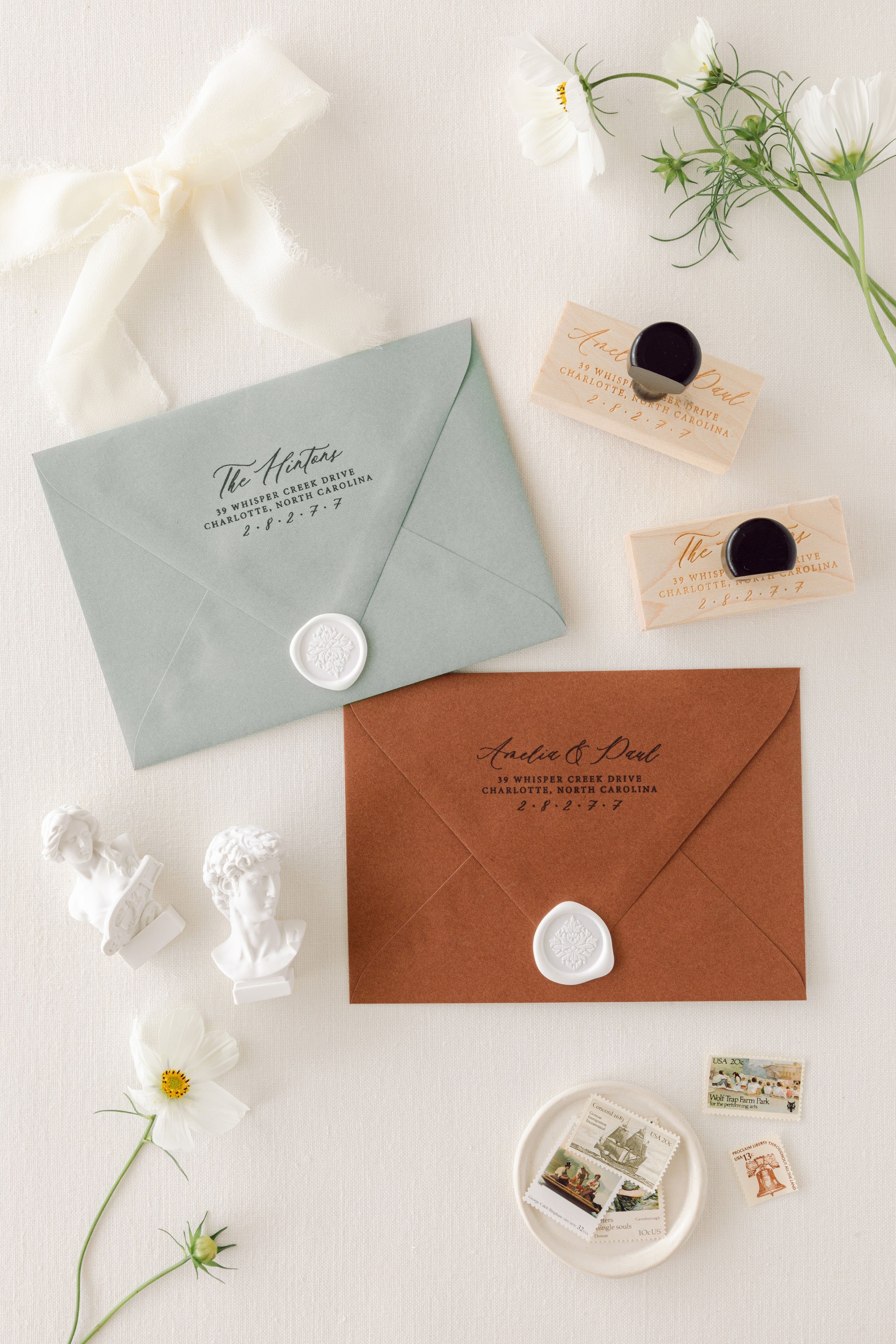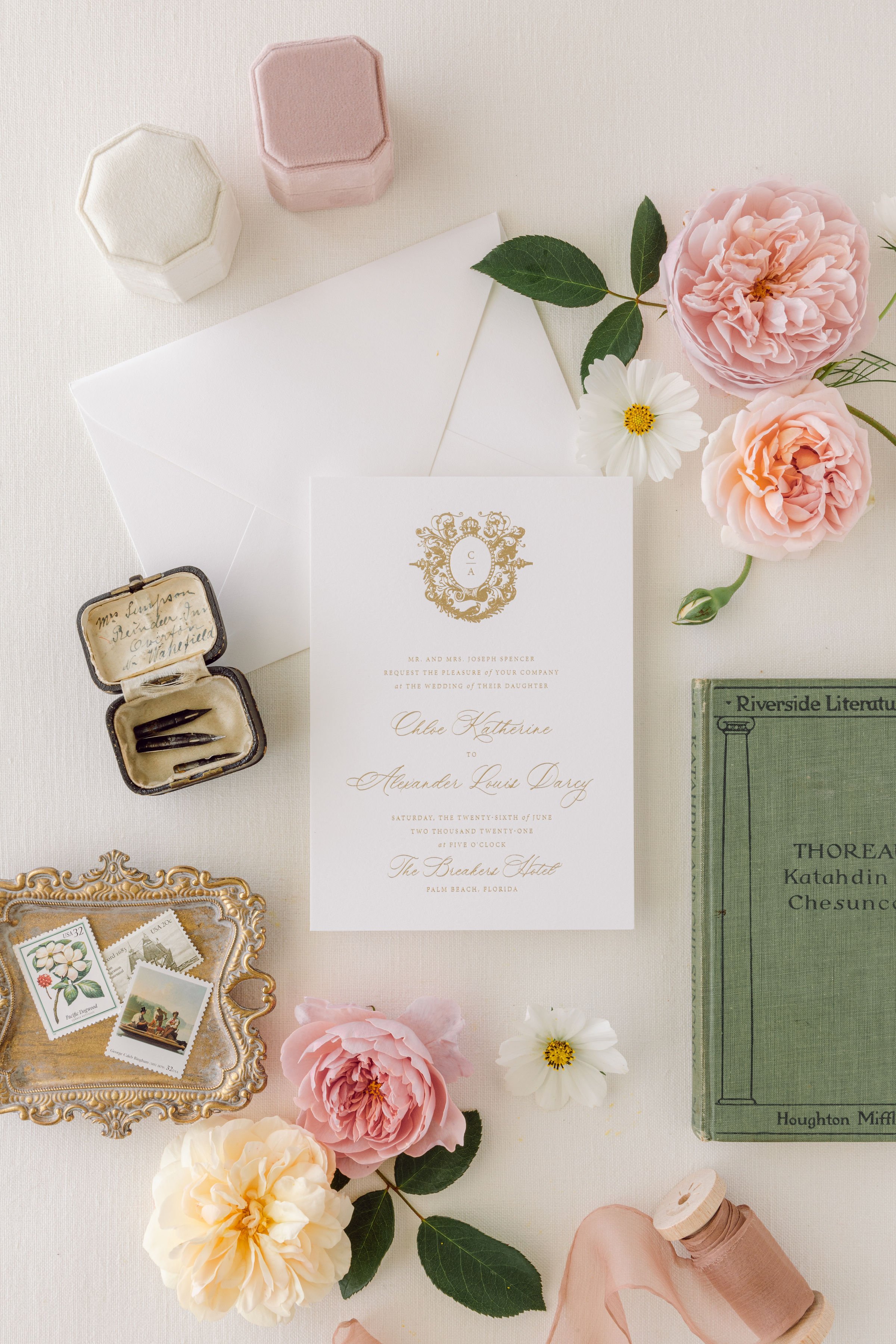How to Address Wedding Invitation Envelopes (Like a Pro!)
Let’s talk about wedding etiquette and honorifics! Exciting right? Not so much. You’re here because you need to know ASAP how to address wedding invitations the right way without offending anyone–not for a full-on grammar lesson.
In today’s post, you’ll quickly learn how to address wedding invitation envelopes like a pro.
You've hired a calligrapher, bribed a best friend with good handwriting or opted for printed envelope addressing. Your wedding guest list is before you, along with hundreds of envelopes.
Now it’s time to #getitdone.
Whether you're a traditional, modern or laid back bride, your entire wedding invitation suite should have a sense of formality. And that includes your envelopes too!
Wedding etiquette can be confusing, specifically for those “special snowflake” situations where you don’t want to offend anyone. You know, like addressing an envelope where the wife is a Doctor, or maybe you have a girl-power Aunt who isn’t crazy about being called “Mrs. John Smith”. (She has her own name, too!)
Thankfully, I have an easy-to-follow guide for wedding envelope addressing to help you get it done easily, quickly and correctly.
A Few Tips Before Getting Started
But first! A few helpful tips for wedding envelope addressing.
Miss, Ms or Mrs? Miss is for a girl under the age of 18. Ms. is used for an unmarried woman or a married woman who doesn’t change her last name. If you are unsure how a woman wants to be addressed, use Ms.
Never use initials. It is acceptable to use middle names if you know them, but never abbreviate them. Mr. John I. Smith should be written as Mr. John Isaac Smith.
Keep proper nouns in mind. The phrases “and guest” or “and family” are not proper nouns and do not need to be capitalized.
Spell everything out. This includes state names, directional words (i.e. North, South), street titles (like Drive, Avenue, Boulevard), etc. You don’t have to spell out street numbers (like 101 Westwood Drive), but if a number is the name of the street you may want to spell it out to prevent confusion (such as 101 Sixth Street). For especially formal weddings, spell out street number under 12, such as Twelve Dunmore Drive.
When in doubt, go formal. If you aren’t sure how someone should be addressed, go with the most formal option.
Everyone over 18 should receive their own invitation, even if they are part of the same household. This includes college-age children who live away from home in an apartment or live-in grandparents.
If your event is black-tie, use both inner and outer envelopes. Keep in mind your inner envelope will only include the names of guests invited with no address. The outer envelope will include their formal title (i.e. Mr. and Mrs. John Smith) along with their address, your return address, and a postage stamp.
Wedding Envelope Addressing Samples
Use the following guidelines below to address wedding invitation envelopes in a snap! Simply plug the template your guest falls within (i.e. single male), then personalize.
Single female:
Ms. Sarah Thompson
Single male:
Mr. John Smith
Single female with a known guest:
Ms. Sarah Thompson
Mr. Michael Jones
Single female with an unknown guest:
Ms. Sarah Thompson and guest
Remember to keep “and guest” lowercase because it is not a proper noun.
Unmarried couple living together:
Ms. Sarah Thompson
Mr. John Smith
Traditionally, for an unmarried couple living together, names are written on separate lines without the word “and”, which implies marriage. However, many modern couples may wish to use “and” to imply union.
Married couple:
Mr. and Mrs. John Smith
Married couple, the modern way:
Mrs. Sarah Smith and Mr. John Smith
Many modern women may wish to include their first names, instead of being lumped in to their husband’s name. In this case, it is traditional to list the woman’s name first.
Married couple with children invited:
Mr. and Mrs. John Smith
Mason and Isabella
Only include children’s names if they are invited to the wedding. You do not have to begin the second line with “and”. If you plan to use very formal wording, use “Master” when referring to a boy under 13 and “Miss” when referring to a girl or young woman under 18.
Married couple, husband is a “Jr.”:
Mr. and Mrs. John Smith, junior
If your event is formal, do not abbreviate “junior”. Remember to keep it lowercase, as it is not a proper noun.
Married couple, wife does not change last name:
Ms. Sarah Thompson and Mr. John Smith
In this case, it is traditional to list the woman’s name first.
Married couple, wife has a hyphenated name:
Mr. John Smith and Mrs. Sarah Thompson-Smith
Married couple, husband is a doctor:
Dr. and Mrs. John Smith
Married couple, wife is a doctor:
Dr. Sarah Smith and Mr. John Smith
If the woman is a doctor, her name comes first because her professional title outranks his social title.
Married couple, both are doctors:
The Doctors Smith
Married couple, husband is a judge or elected official:
The Honorable John Smith and Mrs. Smith
The title “The Honorable” can be used for a Judge, Senator, Representative, Governor, Mayor, State Attorney General, Ambassador, or City Council member.
Married couple, wife is a judge:
The Honorable Sarah Smith and Mr. John Smith
Married couple, both are judges:
The Honorable Sarah Smith and The Honorable John Smith
Widow:
Mrs. John Smith
or
Mrs. Sarah Smith
Traditionally, a widow retain’s her husband’s name. However, she may prefer to use her own first name.
Divorced woman who kept her married name:
Mrs. Sarah Smith
Divorced woman who uses her maiden name:
Ms. Sarah Thompson
And there you have it, dear! I hope these tips have gotten you one step closer to marking those invitations one-and-done.
related blog posts

